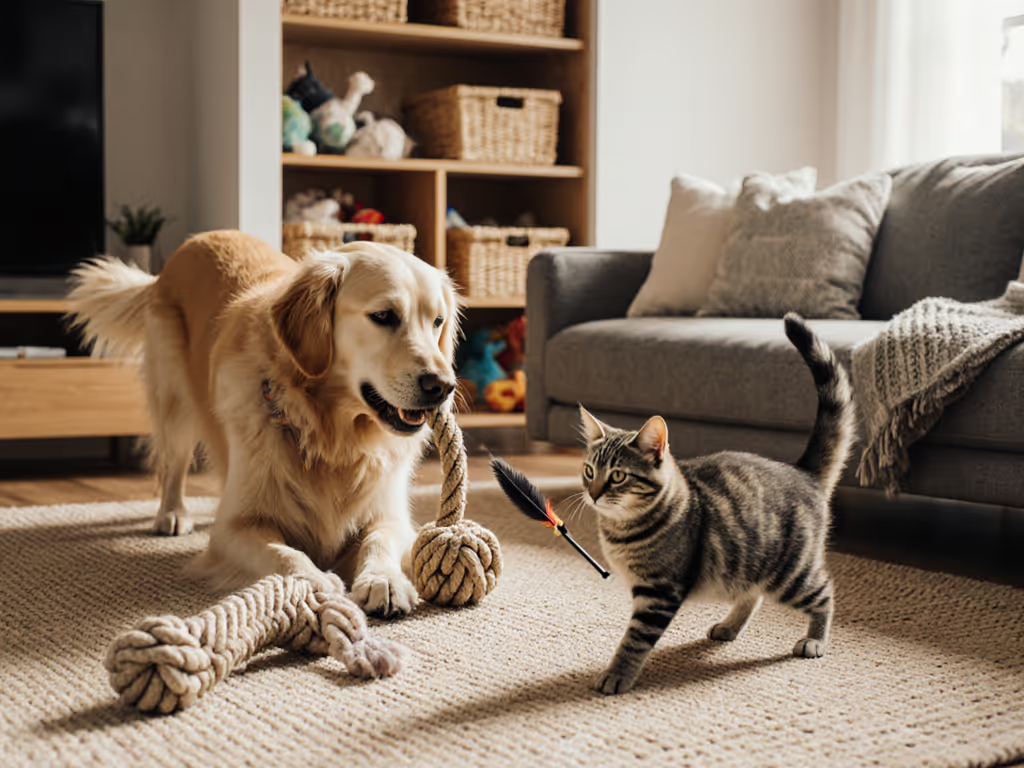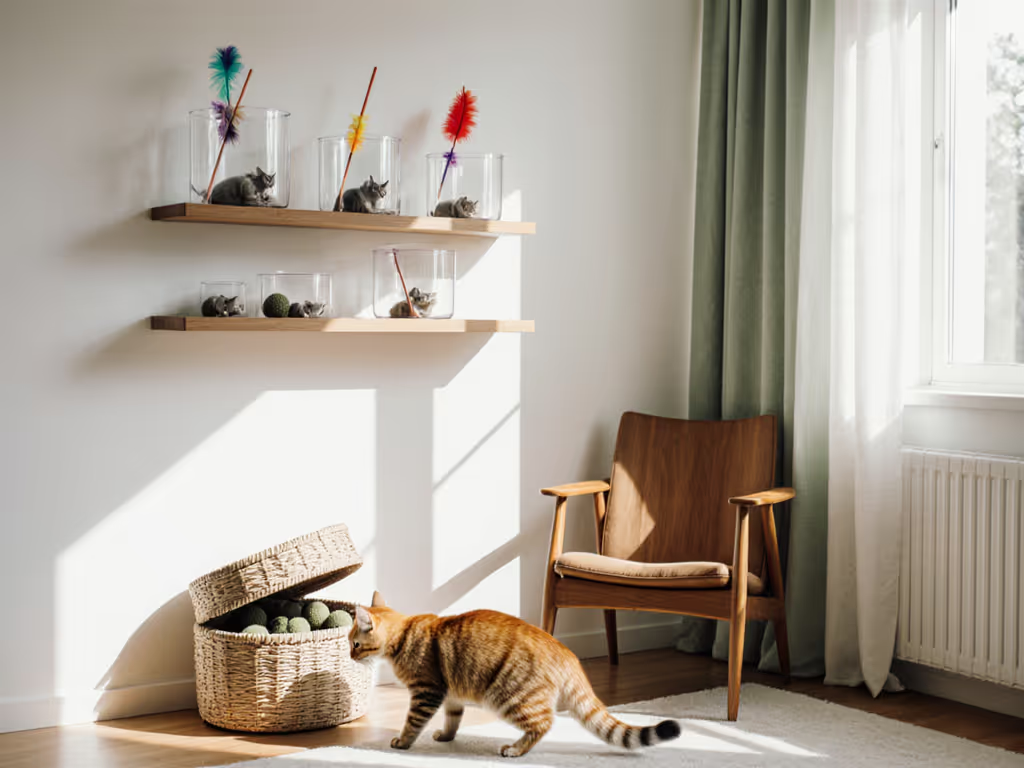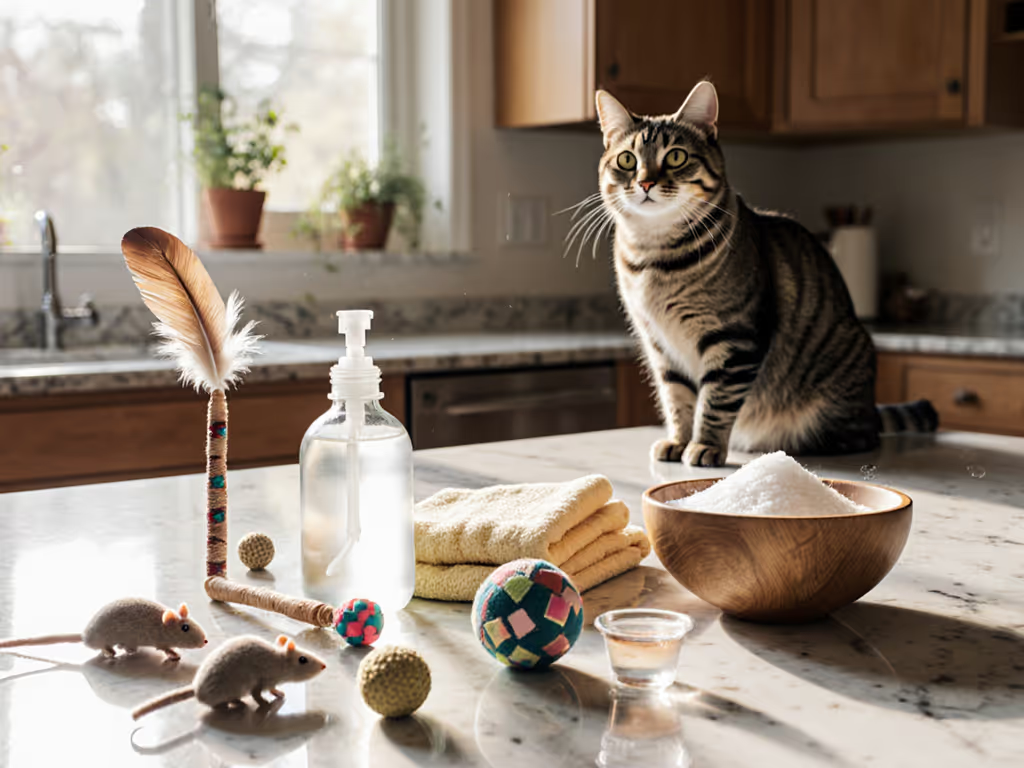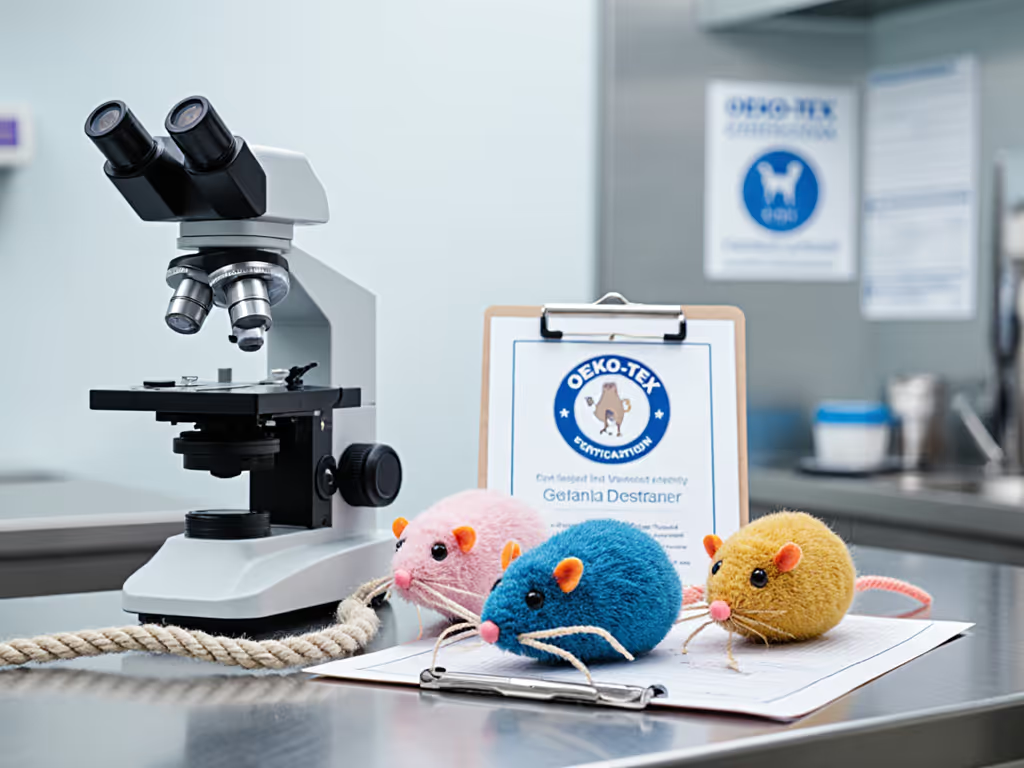
Clutter-Free Moving Cat Toys on a Budget
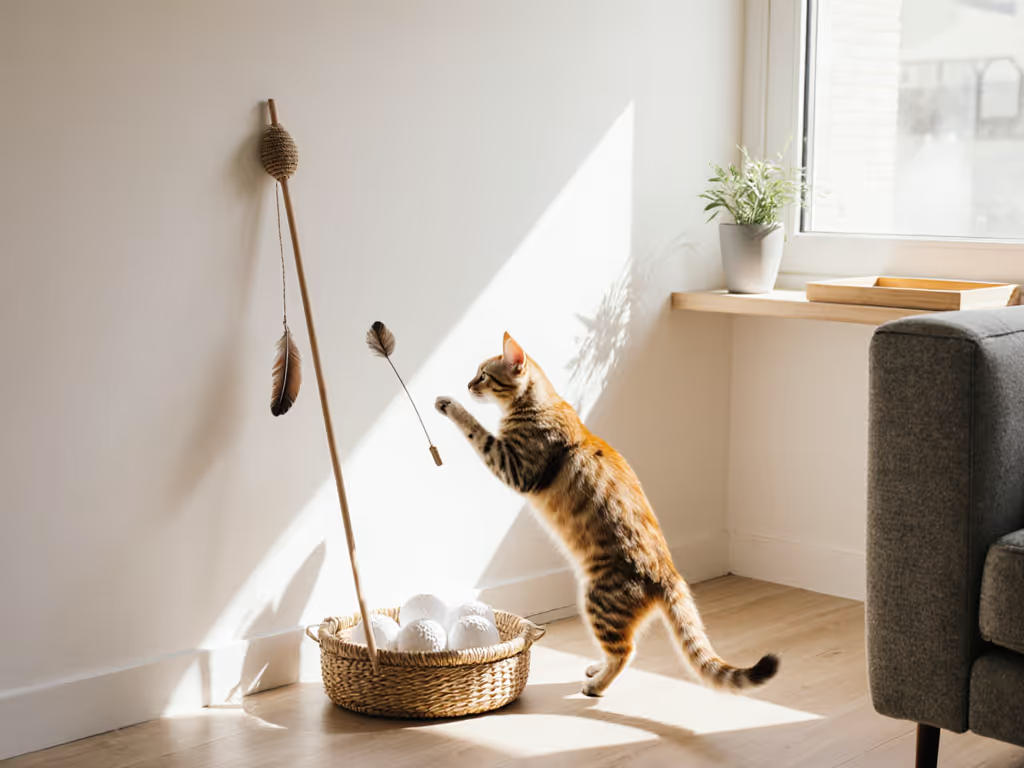
As an apartment dweller who's wrestled with ignored cat toys multiplying like dust bunnies under the couch, I know the frustration of buying what should be good cat toys only to watch them gather lint while your cat fixates on a dust mote. The truth is, the most effective moving cat toys aren't necessarily the flashiest or most expensive (they're the ones that integrate seamlessly into your space and rhythm). When our sunlit loft became an echo chamber of clattering plastic, I realized clutter-free enrichment wasn't just about aesthetics; it was about creating an environment where play could actually thrive. Calm rooms invite play; chaos shuts curiosity down.
If your living space resembles a pet store clearance aisle more than a curated home, you're not alone. Many cat guardians wrestle with toys that create noise pollution, visual chaos, or just sit ignored. But with thoughtful selection, you can cultivate a minimalist enrichment toolkit that respects your square footage, budget, and design sensibility while still meeting your cat's instinctual need for movement-based play.
1. The Slim Wand That Lives in Its Own Drawer
Forget the 3-foot feather poles that require acrobatics. A wand toy under 12 inches tall with a flexible wand tip creates realistic prey movements without dominating your space. Store it horizontally in a utensil divider within easy reach but out of sight. The key is choosing one that folds or disassembles into a footprint less than 6x2 inches. When playtime ends, it disappears completely (no more tripping over dangling feathers during midnight water runs). This minimalist approach means you're actually more likely to initiate those crucial 10-minute hunting sequences daily.
2. Silent Paper Ball Repertoire
A crumpled receipt or junk mail page transformed into a ball costs nothing and creates zero noise pollution. Rotate three different sizes (small for batting, medium for chasing, large for gentle nudging) to maintain novelty. Store them in a small ceramic dish near your seating area, visible enough to remind you to play, but contained enough to avoid becoming floor clutter. This budget-friendly solution delivers authentic moving cat toys that satisfy prey drive without the jingle of bells or whir of motors that disrupt WFH calls or baby naps.

3. Wall-Mounted Target Games
Create vertical interest without floor space sacrifice by mounting a silent felt target (think mouse-shaped fabric silhouette) at ankle height along baseboards. Cats swat and follow it as they patrol room perimeters (perfect for hallways or along walls where furniture already lives). Measure your narrowest hallway space first; even 18 inches of width accommodates this subtle enrichment. No batteries, no charging, and it doubles as discreet wall decor when not in active use. This is moving enrichment that works with your architecture, not against it.
4. Minimalist Floor Runners
A 12-inch section of smooth bamboo gutter (available at hardware stores for $3) creates a silent track for a knotted cotton string or felt ball. Position it along a wall edge where it visually blends with baseboards. The magic? It's storage-ready: store the gutter vertically behind a door and the string in a small jar. Unlike plastic track toys that require 2x2 feet of precious floor real estate, this solution occupies only linear inches along your perimeter, preserving your central living space. This is where "clear floors, clear focus" becomes literal design philosophy.
5. Double-Duty Household Items
Your existing home already contains exceptional moving cat toys if you know how to repurpose them. A rolled-up yoga mat becomes a gentle batting surface. A bookshelf's edge creates natural tunneling opportunities for a trailing ribbon. The key is intentional placement: never leaving items out as permanent fixtures, but incorporating them into brief play sessions then returning them to their primary purpose. This approach eliminates dedicated "cat zones" that fracture your living space, turning your entire home into a harmonious enrichment environment where cat toys don't compete with your aesthetic.
6. Drawer-Store Puzzle Feeders
Skip the bulky, brightly colored puzzle toys that dominate coffee tables. Instead, use a repurposed matchbox with holes cut in the sides, then toss kibble inside and let your cat bat it across floor surfaces. Or upcycle an empty spice jar (remove labels) with strategic drill holes. These solutions store flat in kitchen drawers when not in use, requiring less than 3 inches of depth. They deliver the mental challenge of premium puzzle feeders while honoring your commitment to visual calm. For budget-conscious guardians, this is enrichment that costs almost nothing yet delivers measurable cognitive benefits.
7. The Rotation Ritual
The secret to making fewer toys feel abundant? A disciplined rotation system. Store all but 2-3 items in a lidded basket under the sofa or in a closet (not out of sight where you'll forget them, but deliberately contained). Rotate every 3 days during your evening tidy-up, taking just 30 seconds. This prevents toy fatigue while maintaining visual serenity. Measure your under-sofa clearance first; most baskets under 6 inches tall will glide smoothly in and out. This practice transforms "budget cat entertainment" from a compromise into a conscious design choice that actually extends toy engagement.
8. Night-Safe Moving Toys
For guardians plagued by 3 a.m. zoomies, replace noisy motorized mice with silent alternatives. A knotted cotton string looped through a heavy book creates a quiet pull-toy that stays put. Or place a tightly woven hair tie (not elastic!) inside a small cardboard box, so your cat bats it without sending it skittering across hardwood. These solutions address prey drive fulfillment without disrupting sleep cycles (a crucial consideration for households with babies or sensitive roommates). The quiet movement satisfies hunting instincts while respecting shared-space harmony.
9. Multi-Cat Space Management
In multi-cat homes, competition often stems from spatial conflict, not personality clashes. Designate separate play zones using area rugs (under 24" round) as "hunting territories." Place one moving toy on each rug, like a silent felt mouse on twine. The rugs define personal space without visual clutter, and store flat when not needed. Measure your floor space first; even 18-inch diameter rugs create sufficient separation in studios. This approach transforms potential tension into peaceful coexistence through intentional spatial design.
10. Age-Appropriate Adaptations
For older or overweight cats, gentle movement beats vigorous play. A feather tied to a chopstick (stored in your utensil drawer) creates slow, enticing motions at their eye level. Pair it with a low platform (an inverted baking sheet works) that requires minimal jumping. This solution costs nothing yet delivers species-appropriate movement scaled to physical capability. Store the chopstick vertically beside your cooking utensils, where it disappears among your existing kitchen tools, maintaining visual tranquility while honoring your cat's changing needs.
Clear floors mean clear focus: not just for your cat's hunting instincts, but for your own sense of domestic harmony. When enrichment respects your space constraints and design sensibilities, it stops feeling like an obligation and starts becoming a natural rhythm within your home. The most effective moving cat toys aren't about attracting your cat's attention away from your belongings (they're about creating a shared environment where play feels like a natural extension of your space, not an intrusion upon it).
Calm rooms invite play; chaos shuts curiosity down.
By curating fewer, better-moving cat toys that integrate rather than intrude, you create a home where both human and feline inhabitants thrive. For more nuanced approaches to aligning enrichment with your specific living situation, consider exploring prey-type matching techniques: your cat's ideal toy might be simpler than you think, once you understand their instinctual preferences.

